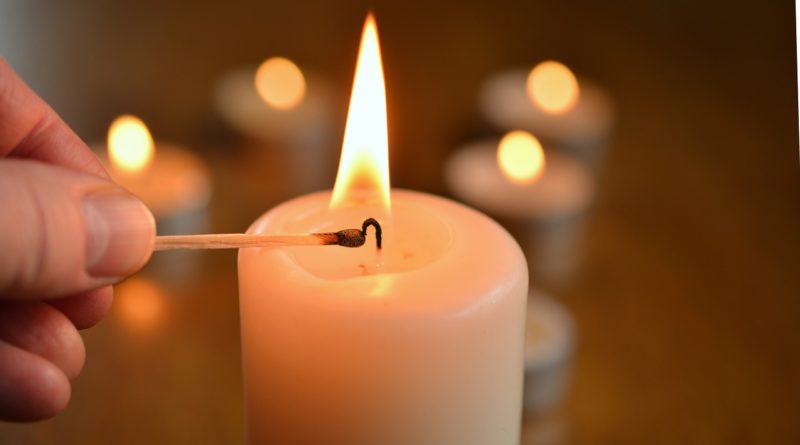Scientists say burning candles at home causes the body damage
Lighting a candle at home may seem cosy, but it could affect your brainpower. Indoor air pollution from candle smoke, without proper ventilation, can affect people’s ability to focus, a study suggests. People frequently burn fashionable fragrant candles, or candles on birthday cakes, in their home. The results come from a study of 26 people […]

lighting a candle
Lighting a candle at home may seem cosy, but it could affect your brainpower.
Indoor air pollution from candle smoke, without proper ventilation, can affect people’s ability to focus, a study suggests.
People frequently burn fashionable fragrant candles, or candles on birthday cakes, in their home.
The results come from a study of 26 people who were placed in a room with a blown-out candle for an hour, and also in the same room with clean air for an hour on a different day.
- Gunmen raid Plateau community, abduct couple, child
- Rivers crisis: Supreme Court dismisses Fubara’s appeal against 27 pro-Wike lawmakers
The study volunteers carried out a set of tests, before and after entering the room in each case.
Four hours after people sat inhaling candle smoke, they did worse in a test of their ability to focus on a picture and ignore distractions.
In the real world, such an effect could harm the professional performance of people working at home.
Dr Thomas Faherty, co-author of the study from the University of Birmingham, said: “Our study provides compelling evidence that even short-term exposure to air pollution can have immediate negative effects on brain functions essential for daily activities.
“We used candles simply to represent a range of indoor and outdoor pollution which could affect people’s cognitive function, so we would not focus on them (SUBS – must keep).
“But it does show it is important to ventilate a space, for example after blowing candles out on a birthday cake.”
The study, published in the journal Nature Communications, judged people’s ‘selective attention’ – their ability to focus on one thing and ignore distractions – with researchers showing them two images at a time.
One image was always a face, which they had to respond to by pressing one key on the keyboard if the face was male and another key if it was female.
The other image was either a blurry static-like pattern or another face – making it harder to focus on the main face during the task.
People took longer to respond when shown two faces – but those who had been exposed to air pollution struggled more.
Tiny pollution particles may also enter the bloodstream through the lungs and eventually make it through the barrier protecting the brain.
There was no link between pollution and working memory, which the study also looked at.
This may be less vulnerable to particles in the air.
